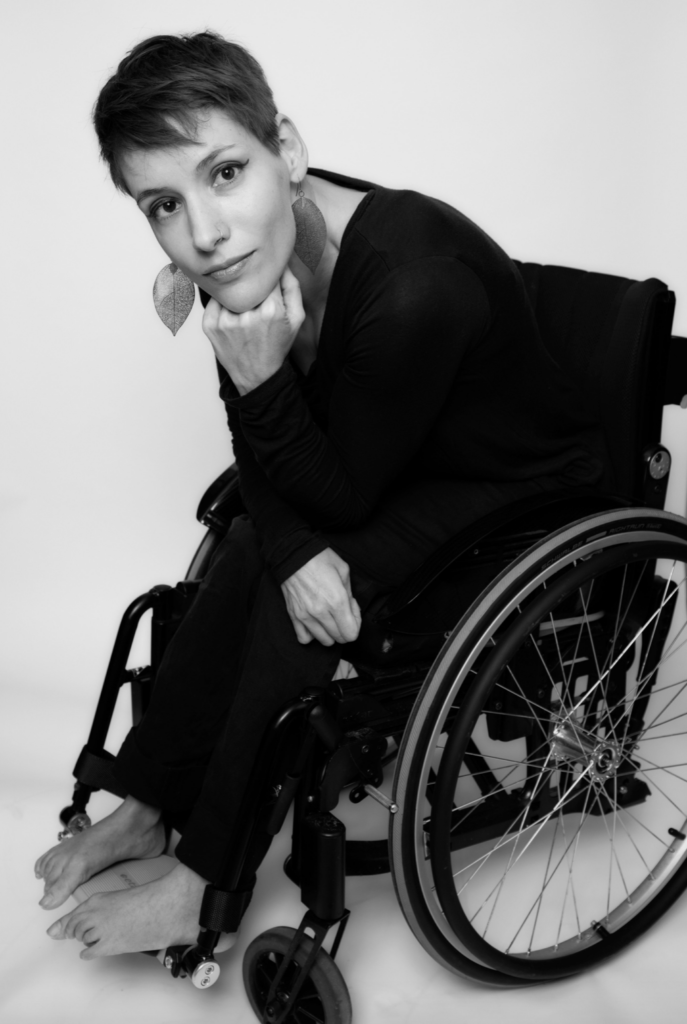Is it calculated exclusion when the public space with countless slopes, lattice gates, curbs, cobblestones, stairs, door steps, misplaced handles, toilet roll holders, floor slopes and blind spots hinders my real opportunity to interact in and contribute to your and my shared space? These are some of the thoughts that Cath Borch Jensen shares in today’s debate post.

Published in Politiken Byrummonitor March 24, 2023
My name is Cath Borch Jensen, I am 39 years old and and I am an ambassador of aspects we do not talk about, #Detviikketalerom, across media and platforms. In addition, I am a bodyactivist, integrated dancer and trained reflexologist — and then I was born with cerebral palsy and I use a manual wheelchair. With these starting points I experience within many aspects of my everyday life and within my own body countless of the everyday architectural exclusion mechanisms that unfold in practice. Both inside and outside all the urban spaces that, among other, include everything from grocery stores, to housing, education and labour market, to our common, civic culture and nightlife.
Many people, from the ordinary citizen to the developer, are of the opinion that if we simply ensure access to a lift/ramp and a ‘standardised’ disabled toilet, then our shared, architectural holy grail of accessibility is well kept.
I find that the good gentlemen (of whom unfortunately there is still a representative preponderance of, and thus ideological support of), forget a few aspects, both in their overall and specific approach to everyday architecture.
Because what is the point of a nice floor plan if the intended ramp is too steep or smooth to access? What good is a drawing of an affordable home if the door frames in their bare dimensions hinder aids, such as wheelchair access? What is the point in paying tribute to our shared, protected cultural heritage, such as Rundetårn, as a commonly shared cultural ownership, if a wheelchair user, first have to wear a helping hand off a pair of walking legs to climb the spiral staircase, and then have to give up on getting to the top because my constantly arched body cannot possibly manage to climb the last flight of stairs?
What good does it do for me to want to contribute to the educational system and the labour market when the university auditoriums are packed with stairs and our everyday streets are paved with heritage cobblestones that constantly block my wheelchair wheels and further complicate my constantly threatened balance?
How can I be part of a workplace community if the canteen is conceived at a distance of 10 meters, peppered with the most beautiful, steepest stairs that cannot be climbed?
My body tenses to the max. Every day and constantly. Even when I’m talking, brushing my teeth and drying my hair. My body is tense, therefore slow, and it invokes needs, which the perspective of the urban space, extremely rarely takes into account.
Out of ill will? Barely. But if I put on top of this, corporeal, daily premise, the countless slopes, lattice gates, curbs, cobblestones, stairs, door steps, misplaced handles, toilet roll holders, floor slopes, blind spots — where does that place my real opportunity to interact in and contribute to yours and my common spaces? What is going on here? Calculated exclusion?
At times, I am tempted to nod yes. Ignorance? Possibly. What is the cure? Involvement? Possibly. But if citizen involvement equals another panel debate, followed by another committee, based on another report that simply repeats what we, who place greater importance on accessibility and the mutually binding community in, our oath to each other that your city is also mine, than the emphasis on aesthetics and eternal kneading of words…Then please free me from from that attempt.
Instead, ask me what I need. And then let’s go together and drive on the street and create. So that we listen, learn and live together.

